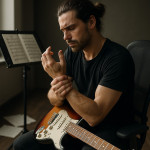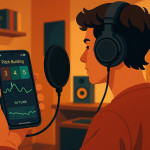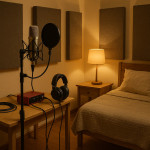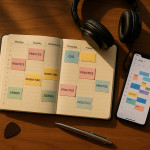From studio to stage: translating layered tracks into a tight live arrangement
Studio productions can stack dozens of vocal harmonies, virtual instruments and subtle effects. Once bookings arrive, you have to condense that rich tapestry into a powerful, tour-ready set. This guide walks you through every decision—gear, personnel, rehearsals and show flow—so your layered tracks sound just as thrilling on stage as they do in your headphones.
Why layered studio tracks rarely work live—unchanged
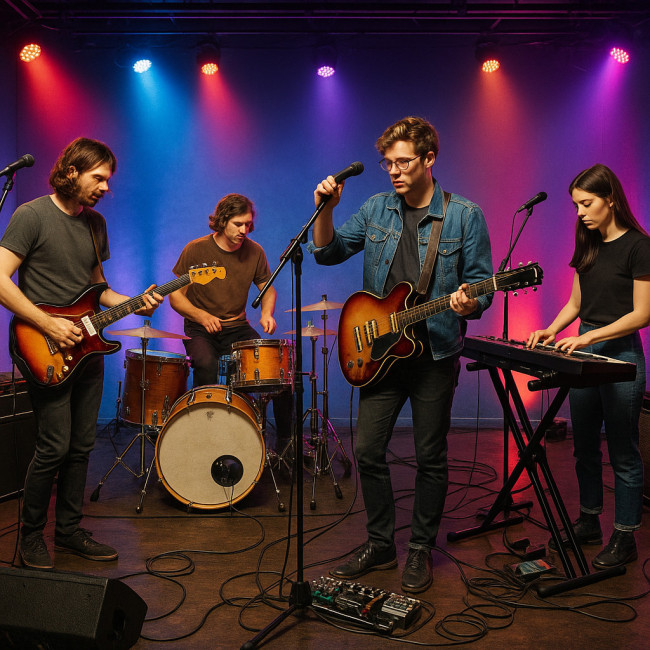
In the studio you benefit from unlimited tracks, punch-ins and editing. On stage you face fixed channel counts, human limitations and the need for visual energy. Understanding these gaps prevents frustration later. For example, that meticulously tuned kick sample shaking your headphones will interact very differently with a venue's 4×18-inch sub stack, and you can't simply punch-in a bad note once it has already echoed through the crowd. The controlled silence of a vocal booth becomes a battlefield of stage rumble, fan noise and crowd screams. Lighting operators also need predictable cues, so the anything-goes timeline of your DAW has to transform into a clock-synced roadmap that leaves space for applause yet never drags. Accepting those real-world constraints early lets you design a show that feels alive rather than compromised.
- Studio mixing masks timing flaws; live acoustics expose them.
- Virtual instruments may need hardware or stems to be reproduced.
- Audience attention relies on movement—nobody enjoys watching musicians click a mouse.
Step-by-step roadmap to a tight live arrangement
1. Map every layer
Create a spreadsheet with columns for part, performer, gear, fallback. Colour-code indispensable hooks (lead vocal, signature riff) versus textures you can merge into a backing track.
2. Prioritise hooks and moments
Fans remember hooks, drops and crowd-participation parts. Keep these live. Less critical pads or eighth-note shakers can sit in a stereo stem triggered by a sampler or a well-synced looping rig.
3. Decide between extra musicians and technology
| Layer type | Best live solution | Pros | Cons |
|---|---|---|---|
| Complex vocal stacks | Hire backing singers | Energy, audience connection | Higher fees, travel logistics |
| Synth arpeggios | MIDI sequencer + keyboard | Authentic timbre, improv room | Needs tight clock sync |
| Ambient pads | Stereo stem | Frees hands on stage | Less spontaneity |
| Sound-design FX | On-board sampler | Trigger flexibly | Extra outboard gear |
4. Create show files and backups
Export stems at 48 kHz, 24-bit, embed tempo markers and name files clearly (e.g., 110bpm_Song-Title_PAD). Duplicate the session on a second laptop in case of crashes.
5. Rehearse transitions, not just songs
Audience energy drops when you fumble between tracks. Build segue cues into Ableton scenes or rehearsal scripts. Need help fitting practice into busy calendars? Check the tactics in flexible rehearsal scheduling.
6. Craft a memorable ending
Strip layers gradually, invite crowd vocals, or launch an extended solo to showcase musicianship. A strong finale converts listeners into merch buyers—crucial if you plan a digital merch drop post-show.
Gear checklist for translating layers on stage
- Audio interface with ≥8 outputs for discrete stems.
- MIDI thru box to clock external synths and lighting.
- Footswitch or pad controller for hands-free cues.
- In-ear monitors to separate click from audience mix.
- Redundant storage (SSD + cloud) for show files.
Soundcheck essentials
Arrive early and follow the soundcheck essentials checklist. Verify that:
- All click and cue feeds are isolated from the front-of-house.
- Bass and kick stems hit the subwoofers cleanly.
- Vocal mic gain leaves 6 dB headroom for on-stage hype moments.
Case study: Condensing a 48-track pop anthem into a four-piece live act

Producer-turned-performer Lina Rivera spent six months transforming her glossy 48-track radio single into a lean touring package that would fit in a hatchback. She hit the road with just a drummer, a guitarist and two laptops, yet the audience never sensed anything was missing. The process began with ruthless layer audits, color-coded spreadsheets and a listening session where she asked friends to hum the first parts that stuck in their heads. Those memorable hooks stayed live; everything else was fair game for stems or deletion. She rehearsed vocal blend techniques in hotel rooms, automated patch changes to a footswitch and even built a fallback acoustic version in case of total power failure. Here's how she adapted:
- Grouped 12 string tracks into one stereo stem with side-chain ducking retained.
- Assigned three-part chorus harmonies to the guitarist and drummer; the fifth harmony stayed in the backing track.
- Used a pad controller to trigger risers and reverse cymbals during breakdowns.
- Left-field FX routings were re-created via pedal chains to keep visuals engaging.
The result? Show length trimmed by 10 minutes, setup time cut in half, and merch revenue up 22 % across the tour.
Common pitfalls and quick fixes
- Over-reliance on tracks – If a laptop fails, the show dies. Keep acoustic or loop-based fallbacks.
- Ignoring venue acoustics – Reverb tails that sound lush in studio can muddy small clubs. Shorten them or use gate reverbs.
- No visual cue system – Add simple LED flash cues or count-in samples so everyone stays locked.
Interactive quiz: Are you tour-ready?
Further training resources
For deeper skill-building, explore the comprehensive musician training hub featuring workshops on live looping, stagecraft and production workflow.
FAQ
- Do I need a separate musical director to run stems?
- Not always. Small acts often assign the role to the keys player who triggers scenes. As your production scales, a dedicated MD reduces cognitive load.
- What sample rate is best for live stems?
- Use 48 kHz because most venue consoles run at that rate, avoiding SRC artefacts.
- How can I keep drummer and sequencer perfectly in time?
- Feed the drummer a click with quarter-note count-offs and ensure your interface clocks to the same word clock as the DAW.
- Should I compress the master stem buss?
- Leave peaks intact; front-of-house engineers prefer dynamic headroom to adapt to each room.
Key takeaways
- Audit every studio layer and label must-have hooks.
- Blend musicianship with technology—avoid fully canned performances.
- Rehearse transitions as obsessively as individual songs.
- Carry backups and follow disciplined soundcheck routines.
Ready to electrify your next audience? Start simplifying one track today, schedule a rehearsal, and watch your studio magic come alive on stage.

